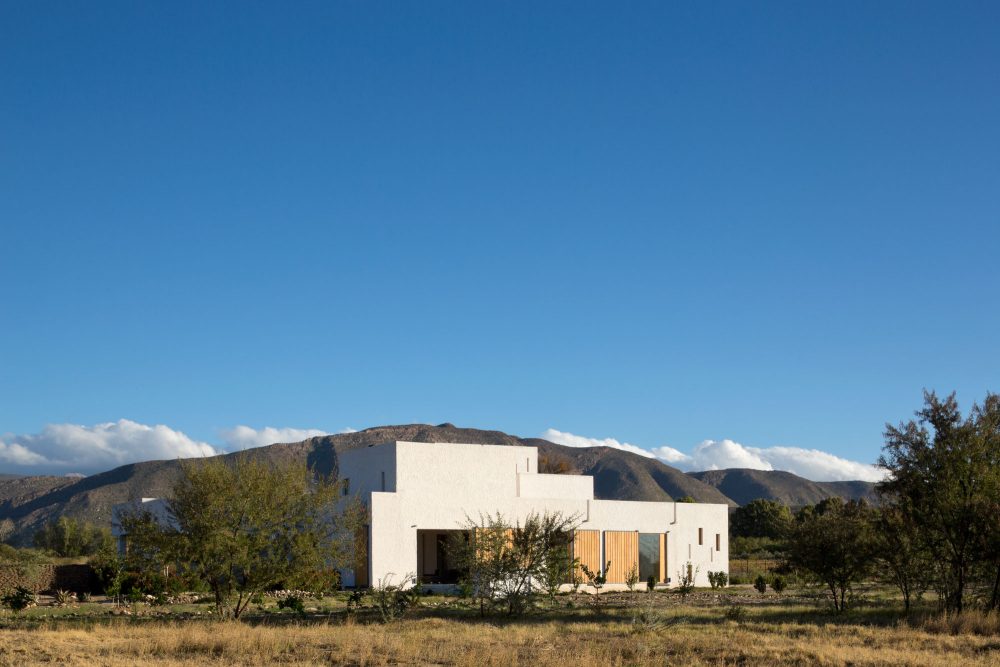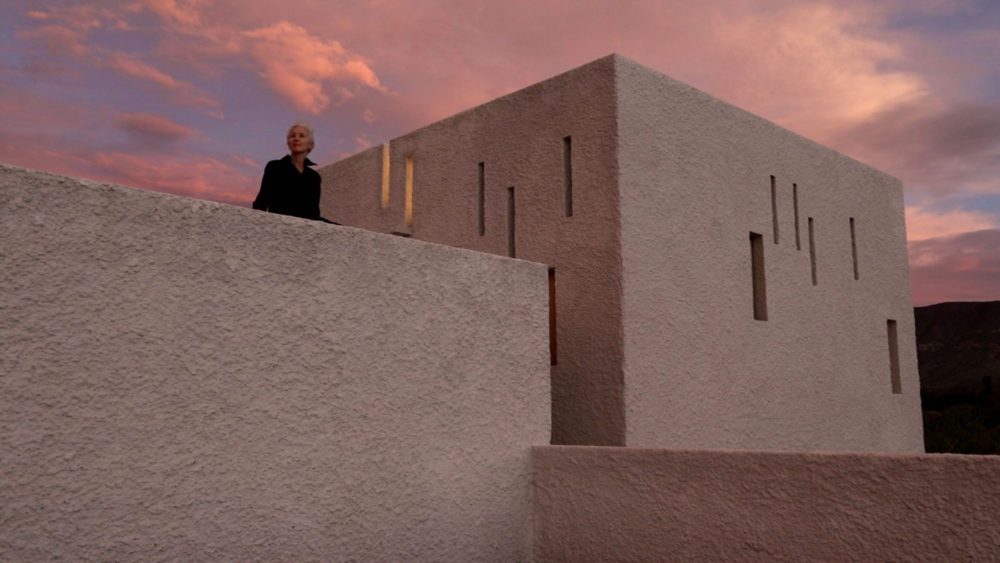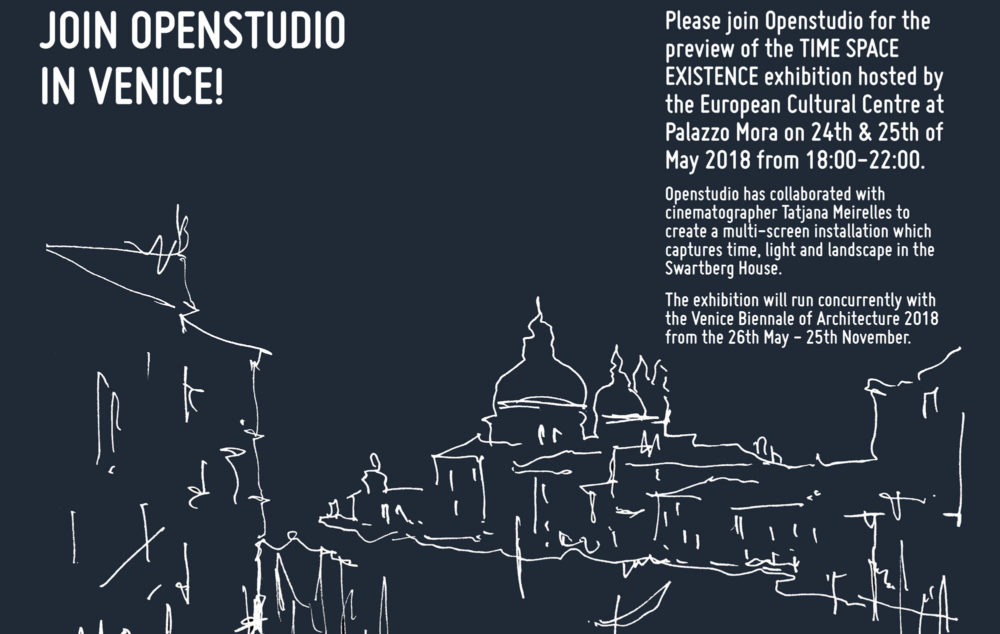Five-screen film installation at the Venice Biennale 2018
Film by Tatjana Meirelles with Openstudio


There’s something I want to ask at the outset: as an architect, what kind of a responsibility do you feel you have to future generations?
When we design our buildings we think, of course, for the present needs of the people who we are building for, but we also tried to look to the future. To build buildings that will last long after the initial inhabitants leave. That will last for future generations, that will contribute to the identity of place, that will wear well, that will offer people the ability to be present in a particular place, in a particular time. And, in a way, buildings are a gift. Architecture takes an enormous amount of time to produce, not only from the people who design it, not only for architects, but also for all the people who build it. And there is a commitment to the process of making a building which is quite profound and I think given all the time that we spend building our buildings, we should also be thinking about just what we are doing, what is the quality of what we are doing, and what are we giving to people we will never meet.


Did you have quite clear idea of what you wanted to exhibit in Venice?
We decided to do a film installation, which is about building in a very ancient landscape, the landscape of the Karoo, one of the oldest places on earth. The building that we did there is a very contemporary building, but it’s a building that acknowledges this immense sense of time in the landscape. So it seemed like an appropriate project to show in this particular city, in response to the theme of the exhibition: Time, Space, Existence.

You could have used any medium, why did you choose to collaborate with the film-maker Tatjana Meirelles on the installation?
A lot of architectural photography focuses on buildings as objects, and the Swartberg House was never designed to be photographed as an object. It was designed as a series of connected spaces that would enable different experiences during different times of day and different times of year. And film is therefore much more appropriate medium because actually it takes away the focus on the building as an object and it puts it more on people, movement, light, environment. Tatjana has done an incredible job of capturing that because she looked at the house as a sensory series of experiences in different lights and she really focused on what the sense of place was, that was particular to that house and I think that was only really possible in the film. And what I love about the film she has made is that it is embeds you in the environment, in the place and it doesn’t focus on yet another beautiful image of yet another beautiful house.

The film circulates from darkness to light and back to darkness again – can you explain why this is significant in the installation?
Something about the Karoo that people might not be aware of, who haven’t spent time there, is how dark it is. It’s not only an ancient landscape but, in a way, when we go back to the Karoo we go back to a time without pollution, without industry, without twenty-four-hour illumination, we go to a place of darkness and extreme light. The installation is about how that darkness and light becomes part of how you live in the house, how it becomes part of gaining an awareness of the place. Film therefore seen like an obvious thing to do because it’s really the only way to get that sense of time passing; of the light changing, of the darkness of the sky, the intensity of the stars, the patterns of light across the walls how – and how things change. Film can communicate changes in way that a photograph would really struggle to do.

Why did you feel so strongly about the use of multiple screens?
The use of multiple screens for the installation was important to us because of how the house works, (but actually how most buildings work), in that they’re not only one space that is inhabited in one way, in one particular time, but there are a series of connected spaces and the series of connected experiences, all exist simultaneously. What the five-screen installation enabled us to do, was to show very different aspects of the house that could exist simultaneously – to build up that idea of layered experience, and detail, looking at the mountains, touching the sliding shutters, looking at the moon and the passage of time, and that because you are looking at five screens, you do get more of the sense of the physical presence of the house, which is actually a very interesting thing. And I think that if you are just looking at one image, you don’t feel present, but also because the screens are set three-dimensionally, relative to each other, they have their own spatial structure. The spatial structure of the screens is not identical to the house, but it has this idea of layering and depth, so it acknowledges the layering and depth of the spaces of the house, in the way that the installation is constructed.

How or why did you feel the Swartberg House was an appropriate project to show?
We took a friend to see the exhibition and he watched the film and then walked through the street of Venice to come back to this beautiful and peaceful Gothic courtyard where we are staying and he said how beautiful and appropriate it was, to go from one place of meditation to another. I think that I hadn’t quite thought of it that way, until he said it. But the film is very much a kind of meditation on existence and our relationship to place – and how, as humans, we actually do need that connection, we need to feel present in the place that we are in. And so I think the thing about The Swartberg house, is it is very much about acknowledging that human need to feel present, and to feel connected, to a place.
If you come to the Venice Architecture Biennale there are a lot of exhibitors, there are a lot of people on the streets; there are a lot visual demands for our attention, and I think that is actually what we are all facing now: there are a lot of demands on us, in our everyday life – the world seems very busy, it’s very full, we have to be responsive. And when you walk through the streets of Venice to come to the exhibition at Palazzo Mora, there’s a demanding visual cacophony, and then going into this quite intimate space, with the five screens, with very immersive sound track, which is just the sound of birds, of doors sliding, of wind blowing – sounds of the actual physical place – takes you to a place of meditation, to a place which is very distinct from the very demanding environments which we all live. And so, again, the film functions in a similar way to the house in that it enables a time of peace, of thought, of quietness – and it enables us to sit, breath, think, reflect, pause and acknowledge the world that we part of.



